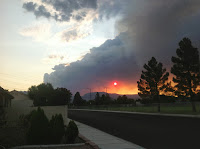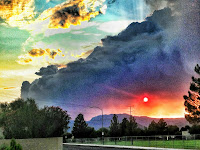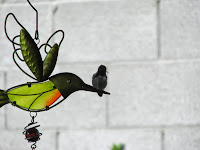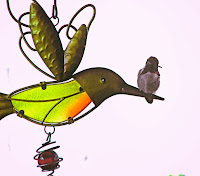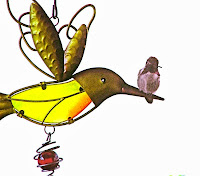With the cooler weather here in Las
Vegas NV I can keep my windows open in the morning. During that time I am able
to listen to whatever birds happen to be singing or calling in my neighborhood.
I often hear the whistle of the Costa’s hummingbird, sitting in a bush or on
his favorite perch on the feeder.
I also
hear the chatter of the Anna’s hummingbird sitting in a nearby tree and the
chirps of the Verdin as it hunts for tiny insects and spiders among the Texas
sage blossoms on the south side of my house. I hear the chips of the Northern
Mockingbird sitting on the top of the neighbor’s house and the abbreviated song
of a house finch warming up his voice for spring. Once I heard a song I was not
familiar with, I listened with great care before I decided it probably was the
song of a passing migrant. I had to because too often I have been fooled into the wrong identification of a song due to the mimicry of the mockingbird. When
mockingbirds mimic others sounds, they usually can’t resist throwing in a
little or a lot of their other repertoire. If you listen for a few minutes and
the song stays pure it most likely really belongs to that bird and is not the mockingbird mocking you.
I see
the Costa’s and Anna’s at the feeders regularly. The finches are still coming
for water off and on throughout the day. There are not as many, since the
flocks of young have mostly moved elsewhere. I know hummingbirds and finches
are coming even when I don’t see them because I have to keep replenishing the
sweet water in the feeders and the drinking water in the ant moats. I also know
the north side feeder is being used because if I disturb a hummer coming to the
west side feeder, it simply zips around to the north side of the house and
feeds there.
 |
| A safe perch for the Costa's. When this was taken on Sept 25 at 10:21 a.m. the wind was 40 mph |
The
tall feeders give an excellent demonstration of the physics of light when there
is a hummer drinking on the far side. The feeder is made of heavy glass and
contains denser water, since it includes sugar. This is a marvelous medium to
show the refraction of light. Light moves at the speed of light only when it is
in a vacuum. When it travels through anything else it must slow down. The denser
the medium the slower it moves. As the light slows down it bends, like a car
skidding when it suddenly changes speed. What we see is the object looking to be someplace it is not. That is
why the fish or penny in the water is never where you think it is.
In this
picture the tail of the hummingbird is visible under the feeder; the head of
the hummingbird can be seen through the glass with sweet water in it. The head seems
to be totally unattached to the tail. Demonstrating that physics is everywhere
with us, including in hummingbird feeders in Las Vegas NV.






